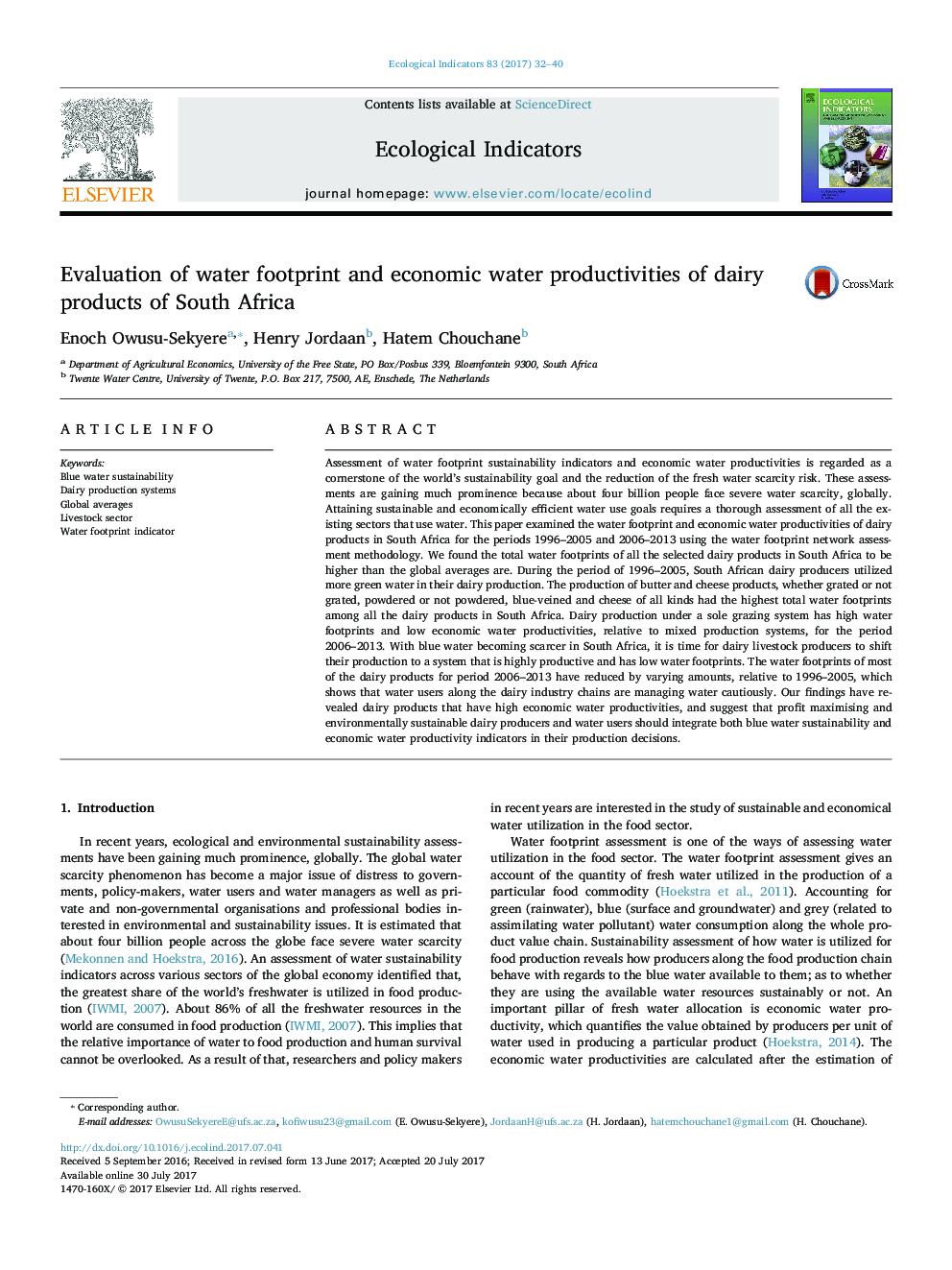| کد مقاله | کد نشریه | سال انتشار | مقاله انگلیسی | نسخه تمام متن |
|---|---|---|---|---|
| 5741475 | 1617119 | 2017 | 9 صفحه PDF | دانلود رایگان |
- South Africa's dairy products' water footprints are higher than the global averages.
- Dairy production under mixed system is economically productive in terms of water use.
- Green water contributes the highest to the total water footprint of dairy products.
- South Africa needs its country specific water footprint sustainability benchmarks.
- Water use can be economically productive but unsustainable in a catchment area.
Assessment of water footprint sustainability indicators and economic water productivities is regarded as a cornerstone of the world's sustainability goal and the reduction of the fresh water scarcity risk. These assessments are gaining much prominence because about four billion people face severe water scarcity, globally. Attaining sustainable and economically efficient water use goals requires a thorough assessment of all the existing sectors that use water. This paper examined the water footprint and economic water productivities of dairy products in South Africa for the periods 1996-2005 and 2006-2013 using the water footprint network assessment methodology. We found the total water footprints of all the selected dairy products in South Africa to be higher than the global averages are. During the period of 1996-2005, South African dairy producers utilized more green water in their dairy production. The production of butter and cheese products, whether grated or not grated, powdered or not powdered, blue-veined and cheese of all kinds had the highest total water footprints among all the dairy products in South Africa. Dairy production under a sole grazing system has high water footprints and low economic water productivities, relative to mixed production systems, for the period 2006-2013. With blue water becoming scarcer in South Africa, it is time for dairy livestock producers to shift their production to a system that is highly productive and has low water footprints. The water footprints of most of the dairy products for period 2006-2013 have reduced by varying amounts, relative to 1996-2005, which shows that water users along the dairy industry chains are managing water cautiously. Our findings have revealed dairy products that have high economic water productivities, and suggest that profit maximising and environmentally sustainable dairy producers and water users should integrate both blue water sustainability and economic water productivity indicators in their production decisions.
132
Journal: Ecological Indicators - Volume 83, December 2017, Pages 32-40
